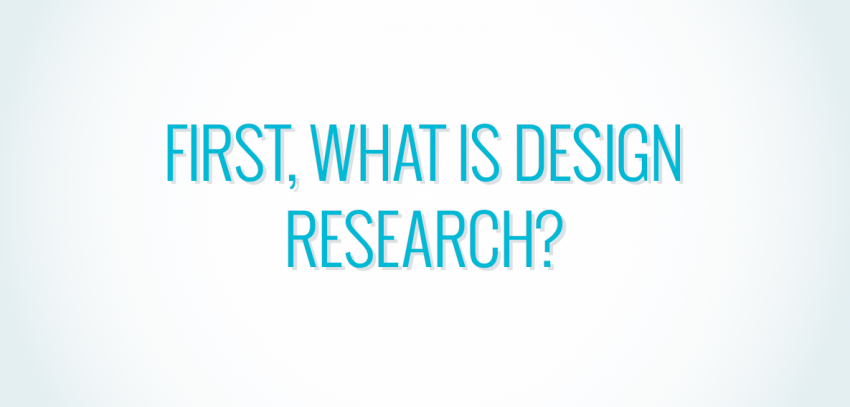Webmaker/Design Research: Difference between revisions
Keyboardkat (talk | contribs) |
Keyboardkat (talk | contribs) |
||
| Line 2: | Line 2: | ||
=== Summary === | === Summary === | ||
[[File:WhatIsDesignResearch.png| | [[File:WhatIsDesignResearch.png|850px]] | ||
[[File:DesignResearchDefinition.png| | [[File:DesignResearchDefinition.png|850px]] | ||
Design research refers to an array of methods, from user testing to codesign, which are applied to provide essential data on user experiences '''throughout the life of a product, prototype or community development process'''. Designers and developers are increasingly employing these techniques in product development to better serve user needs. At the Mozilla Foundation, many of our products have matured to the point that we can now apply core design research approaches in order to better inform each product's development process from conception to final launch. | Design research refers to an array of methods, from user testing to codesign, which are applied to provide essential data on user experiences '''throughout the life of a product, prototype or community development process'''. Designers and developers are increasingly employing these techniques in product development to better serve user needs. At the Mozilla Foundation, many of our products have matured to the point that we can now apply core design research approaches in order to better inform each product's development process from conception to final launch. | ||
Revision as of 23:13, 25 June 2014
MoFo Design Research Lab
Summary
Design research refers to an array of methods, from user testing to codesign, which are applied to provide essential data on user experiences throughout the life of a product, prototype or community development process. Designers and developers are increasingly employing these techniques in product development to better serve user needs. At the Mozilla Foundation, many of our products have matured to the point that we can now apply core design research approaches in order to better inform each product's development process from conception to final launch.
The Mozilla Foundation staff leading the progress of this initiative are Karen Smith, Kat Braybrooke, Emily Goligoski and Chloe Varelidi, with collaboration from User Research and Insights teams at the Mozilla Corporation and various in-house designers who have kindly offered their designs, recommendations and guidance.
File:DesignResearchPresentationSlides.pdf
Our Design Methods
Here are a few diagrams which explain the traditional methods used by design researchers. Past efforts have looked a lot like the first diagram (ie chaos!), but we intend to culminate findings from our activities into one coherent and organized offering in 2014.
Design Research Lab Method #1: User Testing
Design Research Lab Method #2: Co/Participatory Design
Codesign is a term that describes collaborative approaches to product research where the boundaries between users, designers and researchers are intentionally blurred. The term codesign overlaps with that of participatory design, where many early projects occurred in Scandinavia in the early 1980s as new technologies were being introduced to workplaces and trade unions, workers and designers collaborated to ensure workers were not negatively impacted by the introduction of new technologies.
Codesign characteristics
- Method can be used to generate new kinds of designs, or new directions for existing designs, led by community;
- Deliberately blurs boundaries between participants, designers and researchers;
- Non-assumptive: the community participates in defining and approaching design challenges;
- Participants, designers and researchers design and build knowledge together;
- Aligns with Mozilla manifesto [1] and broader goals of empowerment and social inclusion;
- Projects may range from being more "practical" (oriented towards practicality?) with the purpose of building products or content, or "conceptual" to build our skills and knowledge about codesigning with the community.
Suggested implementations
- A codesign research phase embedded into every project and prototype across the Foundation, to ensure in-depth data gathering in each stage of the agile process;
- Immersive participatory design workshops, including creative activities and making materials. Tools may include sticky notes for jotting down ideas, whiteboards for sketching, idea-inducing exercises like charettes. Outputs range from paper prototypes to full-scale reports;
- Qualitative data-gathering to gather on-site user experiences, with researchers embedded at events and makerparties, including participant observation and on-site ethnographies.
Example codesign projects and ideas
- Co-Designing Open Badges for Privacy Education with Canadian Youth (upcoming 2014 - 2015)
- Blog post: Codesign at Webmaker
- Proposal: Let's Teach the Web, Offline
- Telefonica Teaching Kit codesign workshop (Etherpad)
- Blog post: Research reads
- Blog post: Community co-designed personae development for the Open Badges project
Weekly Research Meetings
The Design Research Lab meets every Thursday at noon PST. All interested participants are welcome to attend and go through findings and methods with us. Meeting notes can be found on [2](the User Research Roar Etherpad).





